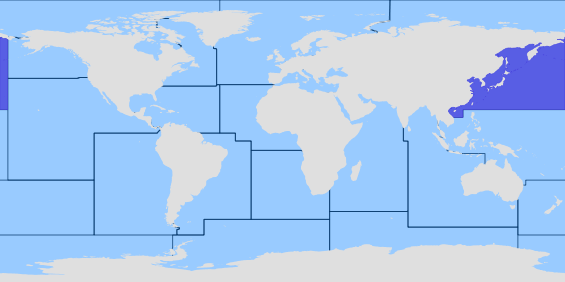Distinguished by the following characteristics: juveniles are pale yellowish grey in color, with oval black blotch on body between bases of the 3rd to 9th dorsal fin spines and extending to the edge of the fin between 1st and 7th spines; semicircular pale band passes ventrally around the oval black blotch and isolates it from the dark brown band that begins broadly on nape and bifurcates just behind operculum, upper branch curving dorsally and expanding broadly over the basal half of the dorsal fin between 9th spine and 4th soft ray, lower branch also curving dorsally and expanding at the base of the last 4 dorsal-fin rays; presence of 2nd curved band, parallel to the one above, runs from interorbital area and rear edge of the eye to a black saddle spot on caudal peduncle; 3rd narrow dark brown band, from lower edge of eye to the subopercle and continues as a series of dark dots along ventral part of the body to the base of caudal fin; pale yellow fins, except where dark markings occur on dorsal fin; adults with faint or absent dark spots on body; fins are yellowish brown, triangular interspinous dorsal fin margins abruptly orange-yellow or brownish yellow; soft dorsal, anal and caudal fins shading to blackish distally with bluish white edge; body depth contained 2.6-3.1 times in SL; head length 2.3-2.5 times in SL; interorbital area slightly convex; 2-5 enlarged serrae at preopercle angle; slightly convex upper edge of operculum; maxilla reaches about to vertical at rear edge of eye; maxilla in adults with step on edge; posterior nostrils of adults larger than anterior ones; 2 rows of teeth on midlateral part of lower jaw; pyloric caeca 8-9 (Ref. 89707).
 Image not available
Image not available





